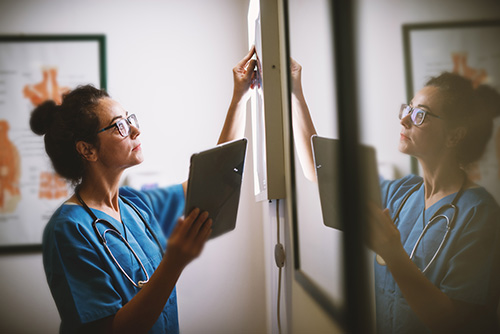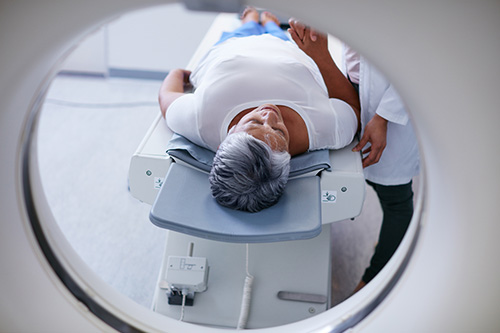Uterine artery embolization (UAE), is a technique usually performed by an interventional radiologist. Most gynecologists are not trained in advanced radiology, so it is usually done by radiologists working with the referring gynecologist.

First developed in France, UAE has been performed in the US since 1995, and the technique of embolization had been used prior to that to stop bleeding in other areas of the body and to stop hemorrhaging after childbirth. Many women are not aware of UAE, however, because their healthcare practitioner may not know of it yet.
Women can pursue this option without a referring GYN. The process begins with a basic consultation and initial MRI evaluation by the consulting radiologist to determine whether the woman is a candidate. If she is, the procedure is usually scheduled for a later date. It’s performed in the radiology department with the woman under some mild intravenous sedation. A small catheter is inserted into an artery in the groin, then threaded into the uterine artery under radiological guidance using dye. With a visual map of the pelvis and uterine arteries, small sand-sized pellets of synthetic material are then released. They lodge in the distal ends and block the blood flow to the fibroid. There have been no adverse effects or allergic reaction reported from these particles to date. The procedure itself takes about 60–90 minutes. The referring GYN then usually follows up.
Uterine artery embolization works by basically starving the fibroid to death over the next several months. By mapping the arteries, UAE technique protects the blood supply to the ovaries, and menopausal symptoms are much less common than they are following surgery. There may be some pain — often intense — and cramping during and after the procedure. Women can go home that afternoon or stay overnight in the hospital for pain management. It usually takes a few days to a week to recuperate — much less than having the possible side effects of general anesthesia and surgery. The results occur slowly over the following months.
UAE was originally recommended for pre- or perimenopausal women with symptomatic fibroids. The procedure was not recommended for women who might want to get pregnant because it was uncertain how it would affect fertility or what the effects would be on a pregnant uterus. New data suggest it may be okay in certain cases. Recently the procedure was reported as helpful also for post-menopausal women whose fibroids had not regressed with menopause. There is a small chance that cancer can be found in the uterus or fibroids, so be sure to discuss this possibility with your doctor. Some women also fail to respond to the technique as desired; the fibroids may also grow grow back in time or new ones may arise.
Where can you get UAE?
Many hospitals have an interventional radiology suite and some physicians have set up separate centers. A large proportion have same-day or overnight observation units — providing round-the-clock nursing care but with the feel of a hotel. Information on doctors trained in UAE can be obtained on-line from theSociety of Interventional Radiology (SIR). Many insurance policies will cover the procedure.
Five questions you should ask about UAE
We always recommend that a woman call and ask a few questions or be seen in consultation before committing to any course of action. Here are some reasonable questions to ask about uterine fibroid embolization:
- Am I a good candidate for UAE? Do I need to have a pre-procedure ultrasound or MRI?
- When did you start offering UAE? How many do you perform a week? A year?
- What are your statistics on successful shrinkage of fibroids? (This figure should be at least 40–50%.)
- When do your women patients usually return to work or daily activities? (Should be in less than a week.)
- What are the side effects of UAE? (Fever, infection, artery injury, premature menopause. Rate should be under 1%.)
For more information on causes and natural treatment of fibroids, refer to our full article.









